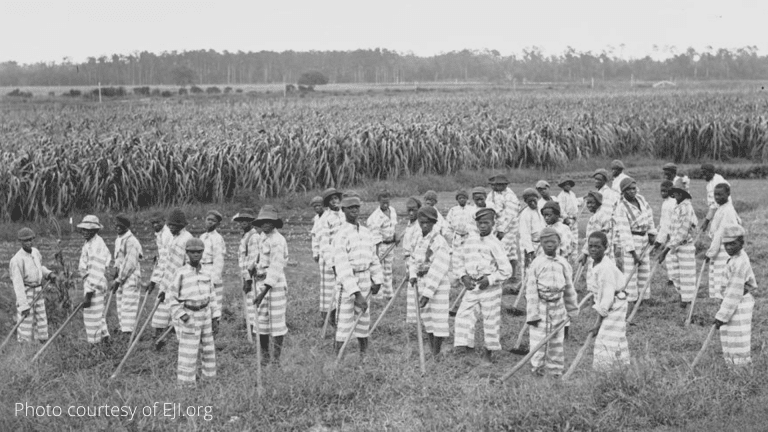
I have argued over the last several posts that the presence of systemic injustice in America today is the result of America’s racist past. The problems created by hundreds of years of racial oppression and injustice did not go away even if the racism that created it did. (And, oh by the way, if one thinks the racism went away, I have bad news for you).
What I have endeavored to show in these posts is that our country’s racist past created a system in which people of color have been systematically oppressed to the point that, even if one were to remove all forms of racial discrimination today, persons of color would still suffer the effects of our racist history for years to come.
Thus, the American “rat race” is not a fair race! Whites today begin the race with a better educational system and better housing and, consequently, more power and privilege.
What I intend to do over the next several posts is to delve more deeply into America’s racist past.
NB: I am a biblical scholar. Some might inquire as to why I do not stick to my specialty and write on matters pertaining to biblical interpretation. My response is that to interpret the Bible correctly is one thing. To apply it to your life is another.
And, if the goal of the Christian life is to become “conformed to His death” (Phil 3:10) so that we might become “perfect/complete in Christ” (Col 1:28),[1] then I am convinced we must be advocates for truth and justice. And I am not convinced that White evangelical Christians in America can do that well unless we speak from our positions of privilege and power and cry out against the systems of oppression that have enabled us to attain our privilege and power. Speaking truth in the face of injustice is what it means to read the Bible well. This is what it means to love.
When I was a child, I used to play cowboys and Indians. The cowboys were the good guys. The Indians were not always the bad guys (by God’s grace it seemed that my conscience had a soft spot against the characterization of Indians as bad), but they were not the cowboys. Westerns and other TV shows only reinforced this. Of course, these shows did not discuss how America actually treated the indigenous peoples of this land.
I must admit that for most of my life I did not understand the history of Blacks in America. I knew about slavery. But I somehow thought that once slavery ended, things became better for Africans living in the US.
- I had never heard of peonage or convict-leasing.
- I did not know what Jim Crow laws were.
- I had no understanding of how segregation adversely affected people of color.
- I had never heard of “sunset/sundown towns.”[2]
- I did not know what Juneteenth was.
- I had no idea that the “war on drugs” was racially driven.
- I was unaware of voter disenfranchisement.
- I had never heard of “the talk,” which all Black parents must give their children.[3]
I do not deny my own complicity in this. I recognize that I am responsible. My point is: How could it be that a person who was reared in the American public school system and has a bachelor’s degree in history from a state university never knew any of this?
Now, I cannot speak for all White persons of my generation. But I do suspect that I am not alone in my ignorance. I am now a very well-educated, White male in my mid-50’s. I was raised by a single mom in a predominately White community in California.
I also went to church very regularly since the time I was 8.
It is one thing for the state to not teach me about our racist past. But why didn’t the Church tell me?
Racism in American history
I noted in a previous post that the US was established by White men as a country for White men. Everyone was not created equal. You had to be a man and you had to be White in order to be afforded the privileges of equality.
A further look into US history reveals that it has been marred by a racist past. When I say that it is marred by a racist past, I do not mean that we have some racists in our country who have made it difficult for people of color. This is true for every country. What I mean is that the US was established as a country for White men and, as such, women and non-Whites have suffered for centuries. The system was set up in order that only White men would flourish. And those who were not White men, suffered greatly so that the White man may flourish!
I always assumed that the primary injustice against Blacks in America was the practice of slavery. Mostly White men forced people from Africa onto ships against their will and carted them across the sea. Those who survived the treacherous journey were forced into a brutal life of slavery. That I knew.
What I did not know was that the ratification of the 13th amendment (1865) did not mark the end of racial injustice in America: it only changed what slavery and racial injustice looked like.
Reconstruction
In 1865, the period of Reconstruction began (1865-77): an era designed to integrate nearly four million freed slaves into the free society and to reintegrate the Southern states back into the US. Though this era may have begun well for many of the freed slaves, it did not last long and it did not end well. In the words of W. E. B. Du Bois, “The slave went free; stood a brief moment in the sun; then moved back again toward slavery.”[4]
During the brief period of Reconstruction, Blacks entered public offices, started schools and businesses, and began to live what looked like a promising life in the US. Jemar Tisby details some of the successes:
Hiram Revels became the first Black US Senator in the nation’s history representing a state as notorious for racism as Mississippi, and P. B. S. Pinchback served for a brief time as the governor of Louisiana, the first Black person ever to serve in the highest political office of a state. Fourteen Black men served in the US House of Representatives at one time. During Reconstruction, 800 Black men gained office in state legislatures, and at one-point, Black men became the majority in the South Carolina House. Countless other Black men took on roles in government like postmasters, assessors, and customs officials.[5]
The era of promise, however, did not last long.
Peonage and convict-leasing
As I noted in an earlier post, one of the problems with racism is that stems from the heart. Simply freeing slaves did not end the racist beliefs that Blacks were subhuman. As Mimi Haddad notes,
The reason the Civil War failed to redress ethnic prejudice is that the so-called inferiority was associated not with slavery, but with ethnicity, which is an unchangeable condition. Slavery was the consequence of an idea: that Africans were inferior. Slavery was not the root cause; an ethnic devaluation was. One can amend the United States Constitution and free the slaves, but new forms of ethnic abuse will emerge because the root problem—ethnic prejudice—has not been addressed.[6]
Unfortunately, the brief period of success that Blacks began to experience only intensified the hatred towards them. The fact that, in some instances, Blacks were living upon the land on which they were formerly enslaved only fueled the racial hatred of many Whites. Whites began to find ways to restore the racial hierarchy that characterized the US as little as a decade earlier.
How did they do it?
Easily: they exploited a loophole in the 13th Amendment. The amendment abolished slavery with one notable exception: “except as a punishment for a crime.”[7] This meant that slavery was not abolished; it just took a different form. In the words of Douglas Blackmon, it took on “another name.”[8]
White men took advantage of the wording of the 13th Amendment and created a new means of enslaving and subjugating Blacks. They created a system of peonage.
Peonage is a form of debt slavery, where an employer compels a worker to pay off a debt with work.
This is how the system worked:
Poor white farmers and formerly enslaved African Americans known as freedmen, who could not afford their own land, would farm another person’s land, exchanging labor for a share of the crops. . . . The land owner would pay for the seeds and tools in exchange for a percentage of the money earned from the crop and a portion of the crop. As time passed, many landowners began to abuse this system. The landowner would force the tenant farmer or sharecropper to buy seeds and tools from the land owner’s store, which often had inflated prices. As sharecroppers were often illiterate, they had to depend on the books and accounting by the landowner and his staff. Other tactics included debiting expenses against the sharecropper’s profits after the crop was harvested and “miscalculating” the net profit from the harvest, thereby keeping the sharecropper in perpetual debt to the landowner. Since the tenant farmers could not offset the costs, they were forced into involuntary labor due to the debts they owed the landowner.[9]
In addition, Whites found other ways to essentially enslave Blacks. They began to pass laws throughout the country that specifically targeted Blacks.[9] Suddenly Blacks were being arrested and charged with crimes such as “loitering” or “not being employed.”[10]
Prisons would then lease these “convicts” (hence, “convict-leasing”) out to railways, mines, and plantations for their labor.
Convict-leasing is a system of forced labor.
The prisoners would be forced to work in dangerous and at times inhumane conditions for no pay. An indication of the conditions in which the convict-leasing system operated is evidenced by the mass grave that was discovered in Sugar Land, Texas in 2018 in which the remains of 95 such prisoners were found.[11]
The result: formerly freed slaves had become enslaved again. Hence, “Slavery by another name.”
Unfortunately, this was just the beginning!
[1] “perfect” is my translation (cp NKJ, NIV, NLT). “Complete” is the NAS. The ESV and NET use “mature.”
[2] While researching, I stumbled upon this article in the Atlantic, “The Roots of Route 66: America’s favorite highway usually evokes nostalgia. But for Black Americans, the Mother Road’s lonely expanses were rife with danger.” https://www.theatlantic.com/politics/archive/2016/11/the-roots-of-route-66/506255/. Last accessed 9-22-20.
[3] I good film one might consider watching is The Hate You Give.
[4] https://www.britannica.com/topic/Black-Reconstruction-An-Essay-Toward-a-History-of-the-Part-Black-Folk-Played-in-the-Attempt-to-Reconstruct-Democracy-in-America-1860-1880. Last accessed 9-25-20.
[5] Tisby, Jemar. The Color of Compromise (p. 90). Zondervan. Kindle Edition.
[6] Mimi Haddad, Ideas have consequences, 11.
[7] https://www.ourdocuments.gov/doc.php?flash=false&doc=40. Last accessed 9-25-20.
[8] See: Douglas Blackmon, Slavery by Another Name: The Re-Enslavement of Black Americans from the Civil War to World War II, Anchor, 2008; and Dennis Childs, Slaves of the State: Black Incarceration from the Chain Gang to the Penitentiary, Univ of Minn. Press, 2015.
[9] https://en.wikipedia.org/wiki/Peon . Last accessed 10-4-21.
[10] Blacks were afraid to stand outside a store lest they be deemed to be loitering.
[11] https://www.washingtonpost.com/nation/2018/11/19/mass-grave-chilling-secrets-jim-crow-era-may-halt-texas-schools-construction/. Last accessed 9-25-20.












